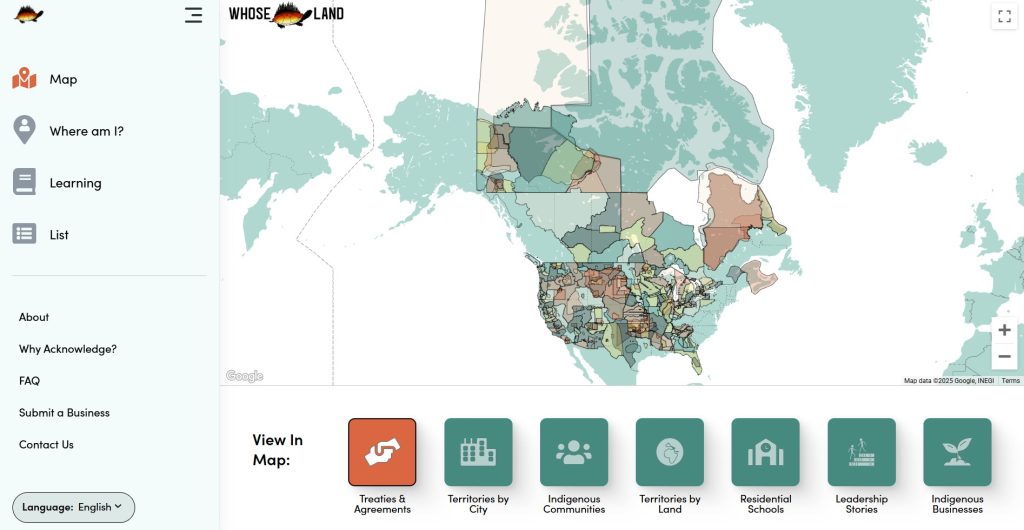Indigenous contexts of Manitoba
Peoples and lands
Our grandparents would share, “If you want to know where you want to go, you have to understand where you came from, to follow the journey the Creator has set for us.”
Chief Katherine Whitecloud, community leader and Knowledge Keeper from Wipazoka Wakpa (Sioux Valley) Dakota Nation, has been CEO for the Assembly of First Nations, Director of the Assembly of Manitoba Chiefs, and Regional Chief of the Assembly of First Nations. Knowledge Keeper Katherine Whitecloud is a member of the Turtle Lodge National Council of Elders and Knowledge Keepers.
Peoples
As an educator in Manitoba, it is very important that you get familiarized with the Indigenous Peoples and lands and learn about relevant treaties and agreements, find information for land acknowledgments, and listen to Indigenous stories of peoples in your local area.
You can start by learning about the following Indigenous groups in Manitoba:
For more information, visit the website of the following local Indigenous organizations:
Lands
Then, you can explore the map in the Whose Land site. In the buttons below the map, you can select Indigenous communities, treaties and agreements, territories by city or by land, and residential schools in specific geographical areas. Please also note the Leadership Stories button to access some personal stories (the stories will open in the Future Pathways Fireside Chats webpage).
Please see the screenshot of the Whose Land website below as reference.
Land acknowledgement
A recommended practice for your teaching is to regularly use the Land Acknowledgment provided by your educational institution and customize it with your own reflection about how your lived experience relates to that acknowledgment.
To learn more, watch this video titled Why are land acknowledgments important? from the Canadian Friends Service Committee (Quakers). In this 2-minute and 35-second video, Naomi Bob share why land acknowledgments are important, and how we can personalize a land acknowledgment. Naomi Bob (she/her) is an Indigenous Youth Wellness Project Coordinator with Provincial Health Services Authority (PHSA), Indigenous Health. Her family is from Snaw’naw’as/Nanoose First Nation, Lyackson First Nation, Peguis First Nation, and her grandfather was a settler from Melbu, Norway. She lives on the unceded and occupied ancestral territories of the xʷməθkʷəy̓əm (Musqueam), sḵwx̱wú7mesh (Squamish) and sel̓íl̓witulh (Tsleil-Waututh) Nations.
Teaching and learning application
To further develop your skills in developing a Land Acknowledgment, the following resource from Brandon University provides a Land Acknowledgment protocol that you can use as a reference:Brandon University – Land Acknowledgment Protocol
In addition, you can refer to the following guiding questions from Durham College to craft your own land acknowledgement:
Durham College – Acknowledging the Land
Here is an example from one of the authors of this course, which includes the institution’s land acknowledgement (in bold), and then a personalized section:
RRC Polytech campuses are located on the lands of Anishinaabe, Ininiwak, Anishininew, Dakota, and Dené, and the National Homeland of the Red River Métis. We recognize and honour Treaty 3 Territory Shoal Lake 40 First Nation, the source of Winnipeg’s clean drinking water. In addition, we acknowledge Treaty Territories which provide us with access to electricity we use in both our personal and professional lives.
As a Canadian citizen originally from Argentina and a member of this community since I immigrated to Winnipeg in 2001, I would like to recognize and appreciate the original stewards of this beautiful land. I would also like to recognize the traditions and culture of the Indigenous communities in Buenos Aires, my hometown: Guarani, Quom (Toba), and Mapuche.
In sharing this land acknowledgement, I would like to open myself to different ways of understanding and experiencing the world and invite you to consider what this land acknowledgement means to you and how we can further work individually and collectively to advance Truth and Reconciliation, and diversity, equity, and inclusion in our community.
Sources:
Turtle Lodge Central House of Knowledge. (2020). Wahbanung. The resurgence of a people: Clearing the path for our survival. Retrieved from https://manitobachiefs.com/wp-content/uploads/2020/07/Summary_of_WAHBANUNG_V2-Final_WEB.pdf (Accessed: 6 February 2025)
Whose land. Retrieved from https://www.whose.land/en/. (Accessed: 10 July 2024)


